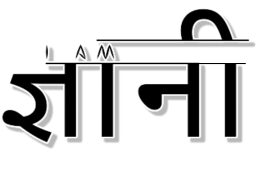Under a monarchy, the government functions differently compared to other forms of government like republics or democracies. In a monarchy, the state’s head is a monarch, who can be a king, queen, emperor, or empress. The monarch typically inherits their position through a hereditary line or is appointed based on specific rules and traditions.
The specific workings of a monarchy can vary depending on the country and its historical development, but here are some common features:
- Constitutional Monarchy: In many modern monarchies, such as the United Kingdom, Spain, Japan, and Sweden, the monarch’s powers are limited by a constitution. This means that while the monarch remains the symbolic head of state, real political power is vested in elected officials and a parliamentary system.
- Absolute Monarchy: In some historical and rare cases, a monarchy might be an absolute monarchy, where the monarch has significant control over the government and the state. The monarch’s decisions are not subject to the constraints of a constitution, and they exercise authority over various aspects of governance.
- Advisory Role: In constitutional monarchies, the monarch’s role is often ceremonial and symbolic. They may perform duties like opening and dissolving the parliament, representing the country at official events, and bestowing honors. While they usually don’t make day-to-day political decisions, they might have some reserve powers that they can use in extraordinary situations, though these are often exercised on the advice of the government.
- Prime Minister and Cabinet: In constitutional monarchies, the actual governance is carried out by elected representatives. A prime minister, who is the head of the government, is usually appointed by the monarch. The prime minister is the leader of the majority party or coalition in the parliament and exercises executive authority along with the cabinet ministers.
- Parliament: The parliament, which consists of elected representatives, holds the legislative power in a constitutional monarchy. They propose and pass laws, debate important issues, and oversee the government’s activities.
- Judiciary: The judiciary is responsible for interpreting and upholding the laws of the country. In constitutional monarchies, the legal system is usually independent of the monarchy and the government.
- Monarch’s Privileges: Depending on the country’s traditions and laws, the monarch may have certain privileges and immunities. For instance, they might be exempt from certain taxes, and their personal property might be considered as part of the Crown’s property.
It’s important to note that each monarchy can have unique traditions and customs, and the level of influence the monarch wields can vary significantly. Some monarchies may have evolved into more symbolic roles, while others may still retain significant political power. The relationship between the monarchy and the government is shaped by historical, cultural, and legal factors in each country.
Constitutional Monarchy:
In a constitutional monarchy, the monarch’s powers are limited by a constitution, which is a set of fundamental principles and rules that govern the country. The constitution outlines the framework of the government, the rights and duties of citizens, and the distribution of powers among different branches of the state.
Key characteristics of constitutional monarchies include:
- Symbolic Head of State: The monarch serves as the symbolic head of state, representing the unity and continuity of the nation. They often embody the historical and cultural identity of the country. However, the day-to-day governance and decision-making are carried out by elected officials.
- Ceremonial Duties: In this system, the monarch typically performs ceremonial duties and official functions. These may include attending state events, receiving foreign dignitaries, and conferring honors or awards. These roles are mostly symbolic and do not involve direct involvement in the political process.
- Reserve Powers: While the monarch’s powers are limited by the constitution, they may retain certain “reserve powers” that can be exercised in exceptional circumstances. These reserve powers are typically used sparingly and are largely symbolic. Examples of reserve powers may include the ability to appoint or dismiss the Prime Minister, dissolve the parliament, and grant pardons.
- Role in Parliament: In constitutional monarchies, the monarch often plays a ceremonial role in the legislative process. The monarch’s formal consent is usually required to turn a bill passed by the parliament into law. In practice, this consent is a formality, and the monarch rarely withholds approval.
- Royal Assent: In countries like the United Kingdom, where the monarch is a constitutional figure, bills passed by the Parliament must receive the Royal Assent before they become law. Royal Assent is a legal requirement, but it is considered a formality, and the monarch cannot refuse to grant it.
- Neutrality in Politics: Constitutional monarchs are expected to remain politically neutral and not interfere in the government’s day-to-day affairs. They are meant to act on the advice of elected officials and respect the democratic process.
- Succession and Inheritance: The line of succession in a constitutional monarchy is often based on hereditary principles. The next in line to the throne is usually a close family member of the reigning monarch, such as a son or daughter. In some cases, if there is no direct heir, the line of succession may pass to a sibling or a more distant relative.
Overall, the role of the monarch in a constitutional monarchy is more symbolic than executive. The real political power lies with elected representatives, particularly the Prime Minister and the Parliament. This system allows for a balance between tradition and continuity, represented by the monarchy, and the democratic principles and governance provided by elected officials and the parliament.
Absolute Monarchy:
An absolute monarchy is a form of government where the monarch holds supreme authority and exercises almost complete control over the state and its governance. In this system, the monarch’s powers are not constrained by a constitution, and their decisions are not subject to the approval of elected officials or a parliament. Instead, they rule with absolute power, often claiming their authority as divine right or through a long-standing tradition of hereditary rule.
Key characteristics of absolute monarchies include:
- Centralized Power: The monarch is the central authority and holds all executive, legislative, and judicial powers in the state. They make laws, enforce them, and interpret them, without needing to consult or seek approval from other branches of government.
- Unlimited Authority: The monarch’s authority is virtually unlimited. They can issue decrees, impose taxes, and make decisions on matters such as foreign policy, the economy, and social issues, often without any legal or institutional checks on their power.
- No Separation of Powers: Unlike democratic systems that have a clear separation of powers among the executive, legislative, and judicial branches, an absolute monarchy concentrates all powers in the hands of the monarch.
- Hereditary Succession: Absolute monarchies often follow a system of hereditary succession, where the throne passes down from one generation to the next within a specific royal family. The eldest son or another designated heir typically succeeds the reigning monarch.
- Personal Rule: The monarch’s will and decisions are paramount. They may consult with advisors or councils, but ultimately, their personal judgment and desires shape the policies and actions of the government.
- Controlled Opposition: Dissent or opposition to the monarch’s rule is often suppressed or controlled through a combination of strict laws, surveillance, and a powerful military or security apparatus.
- Limited Rights for Citizens: In absolute monarchies, citizens’ rights and freedoms may be restricted, and there may be little to no room for political dissent or freedom of speech.
Historically, absolute monarchies were more common in earlier centuries, with examples including pre-revolutionary France under Louis XIV, Russia under the Tsars, and the Ottoman Empire. Today, absolute monarchies are relatively rare, and many have transitioned to other forms of government, such as constitutional monarchies or republics.
If you like this Post, So leave the comment



